



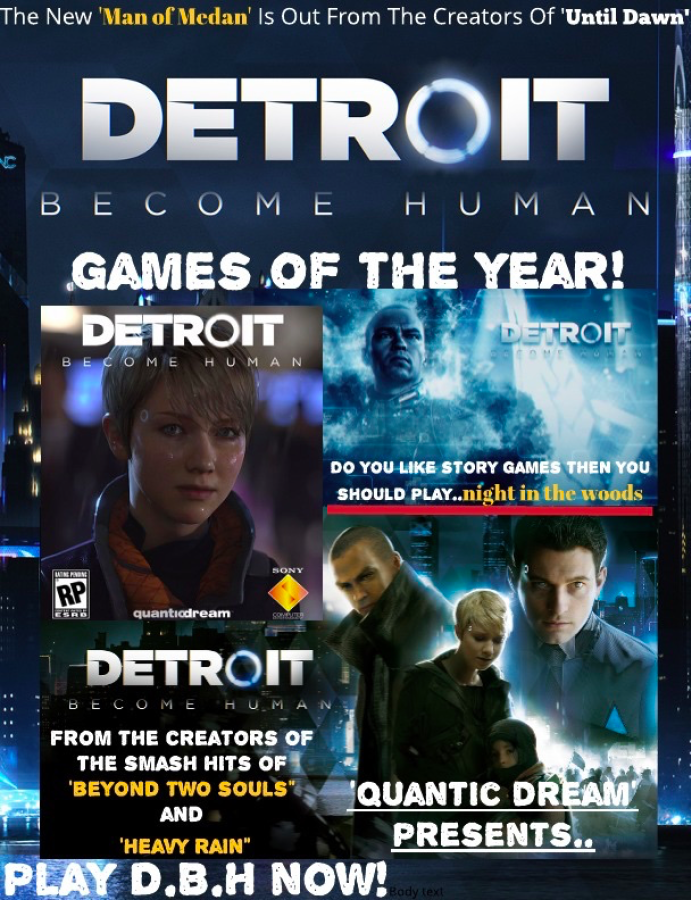
For this summer project of designing a video game magazine cover I started off listing my top favourite games I’ve either played or watched playthroughs of. My list contained; “Detroit Becomes Human”, which is my most favourite game I’ve ever played that is filled with diversity,amazing graphics, great story lines and more. “Night In The Woods” is a story line game with cute graphics and lovable characters. “Little Nightmares” a horror adventure game that explores this odd world filled with suspense and mystery. And the final game on my list was “Man Of Medan’ it’s a sequel to the classic horror decision game “Until Dawn”.
So after listing my favourite games I started to look at different professional video game magazine covers, and I noted the similar things the covers had in common. Most would showcase one game as the main interest of the cover, and put smaller titles for other games. To catch the interest of the audience, if the first game wasn’t as appealing.
When creating my magazine cover I used a gaming cover about the ‘Last Of Us’ as a reference. I did this because it could help me create a more realistic and professional gaming cover, almost like a template.
To follow the plan of having one main game to present I decided to go with “Detroit Becomes Human’ because It firstly was my number one game on my top 5, and It had the most usable material for a gaming cover.I started the process of making this cover by finding a collaging software, were I could add text, and photos together to create my cover.
I ended up finding this software called, lucid press which was free, and easy to use. When I loaded up lucid press I started playing around with the order and arrangement of screenshots to see what would look the best, whilst leaving room for subheadings.
After I chose the correct order of the pictures I looked back at my reference to see how its subheadings where placed and with what colours,language, and font they used to intrigue their audience. With the cover I was referencing from they would put their subheadings in bold, to make the audience enticed to read it. They also changed the fonts; size, colours or shape to make the names of the games stand out more.
To make the cover stand out more, they chose a dramatic photos. Which would intrigue the audience to want to know more about what the game is about. Also when choosing a photo for a magazine cover usually they place the main character for the big heading since more people will recognise it and want to read it. I took this into account and put the main 3 characters of the game on the magazine cover.
With designing a magazine cover, colours matter a lot. The colour palette of a magazine cover, can contribute to if the magazine gets sold or not. So it’s very important to not over power the colours or leave them to bland.
When creating my cover I tried to make it look dramatic whilst not over filling the page with titles. I think it turned out well, and im really pleased with the outcome. I think my magazine cover is more aimed at the audience of ages late teens to early twenties.

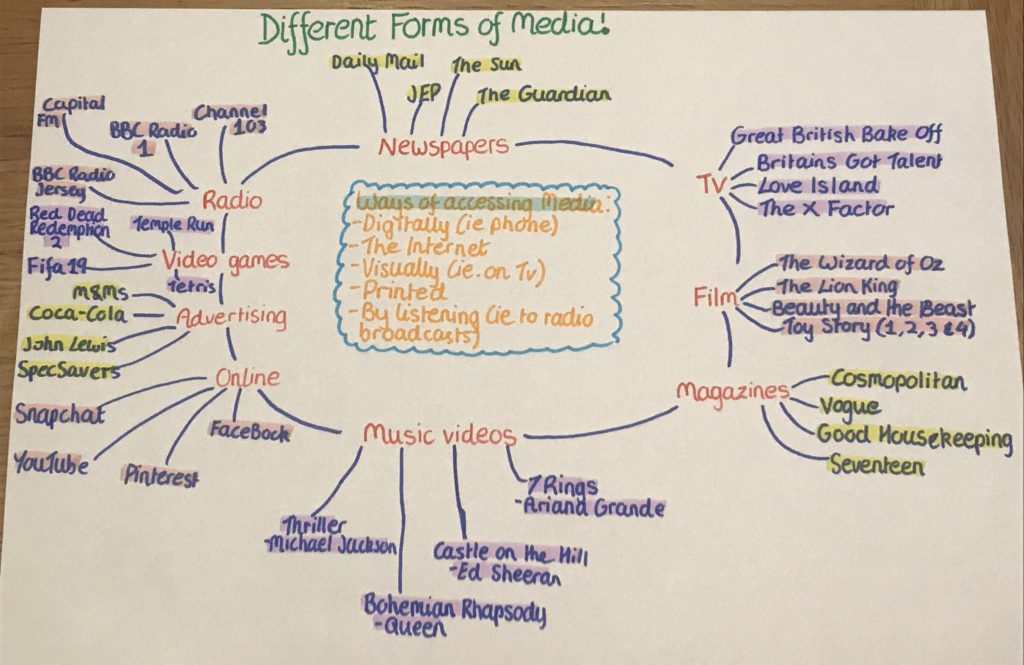
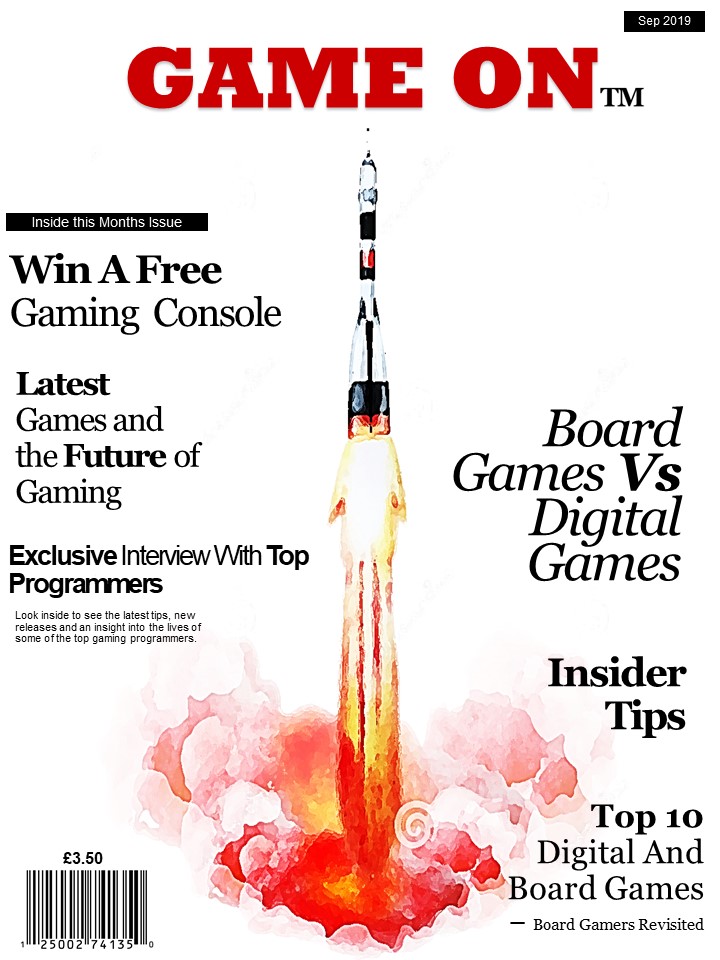
Signs
Iconic Signs
Indexical Signs
Symbolic signs
Summer Tasks – Communication of Ideas and Intentions
The title of my new magazine for gamers is ‘Game On’. I have named it this because it has alternative interpretations, for example the Gamer colloquium for the game has started as well as the continuation and future of gaming. I have made the title much larger and in a different font to the rest of the text with the intention of it standing out from a distance to try and capture attentions. It is bold and the colour red as red is a colour associated with fire, energy, danger, hate, strength/power, as well as passion/desire, and love, typical themes associated with modern digital gaming. It is located in the centre and the top of the cover with little other text around it so that it draw more attention to the title itself.
I have included a price of £3.50 and date on the cover as this magazine is intended to be monthly and issued on the 1st week of each month.
I have included many subheadings of article and information contained within that particular issue on the front cover. The items inside this issue are varied including a mixture of board gaming articles and digital gaming articles with constant comparisons of the benefits between the two. It includes tips and advice that might appeal to serious or armature gamers. Interviews with programmers which gamers or those with an interest in that particular field or career may find appealing. Competitions to actively involve buyers of this magazine, and luxury prizes to encourage more people to purchase the magazine. I have included this particular selection of articles on the front cover with the aims of appealing to a varied audience and trying to broaden the market of this magazine to encourage different interests and buyers of the magazine.
For all text, excluding the title, on the front cover, I have used the same font and colour. However, have varied the size and positioning of the text and put certain words in bold with the aims of drawing focus to the key words and inciting intrigue however, there is no particular order on structure to the size of text, only the explicit aims to make it varied and entertaining, such as gaming itself. I have used all black text on the cover to stand out from the background and title, it is a universal colour that is not heavily associated with either board or digital games as this magazine addition is equally focuses on both.
The background colour of the front cover is plain white, white is often associated with things that are brand new, (digital games,) however, can also be associated with tradition, (traditional games/board games). As it is plain it can represent the start of a game e.g. an empty board or new level etc.
The background image is a simple design of a rocket taking off an object off which could be associated with the start of a game or an object within a game. It is a simple, plain image so that its contents and headings are more focused on as that is the main function of the magazine.
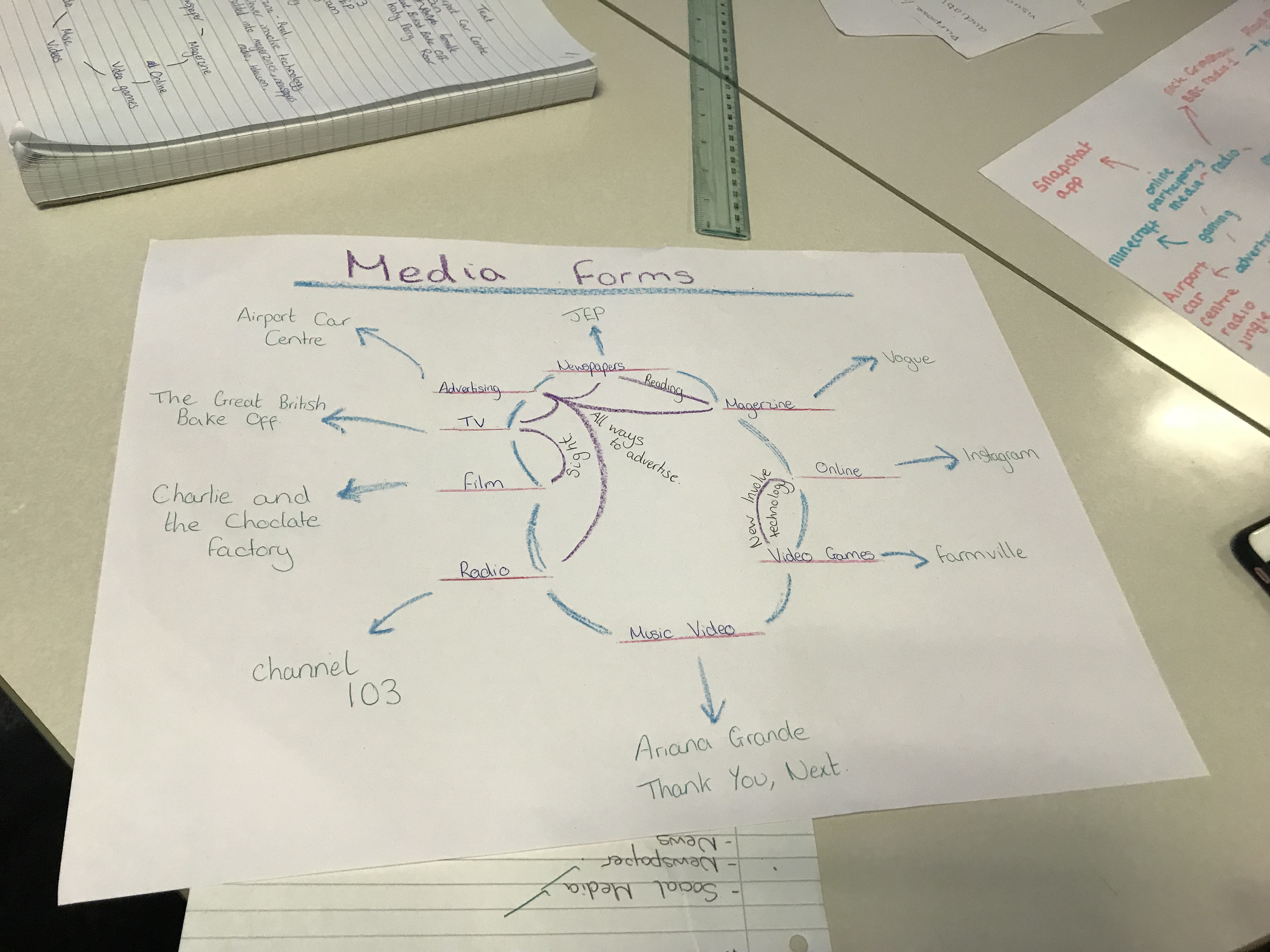

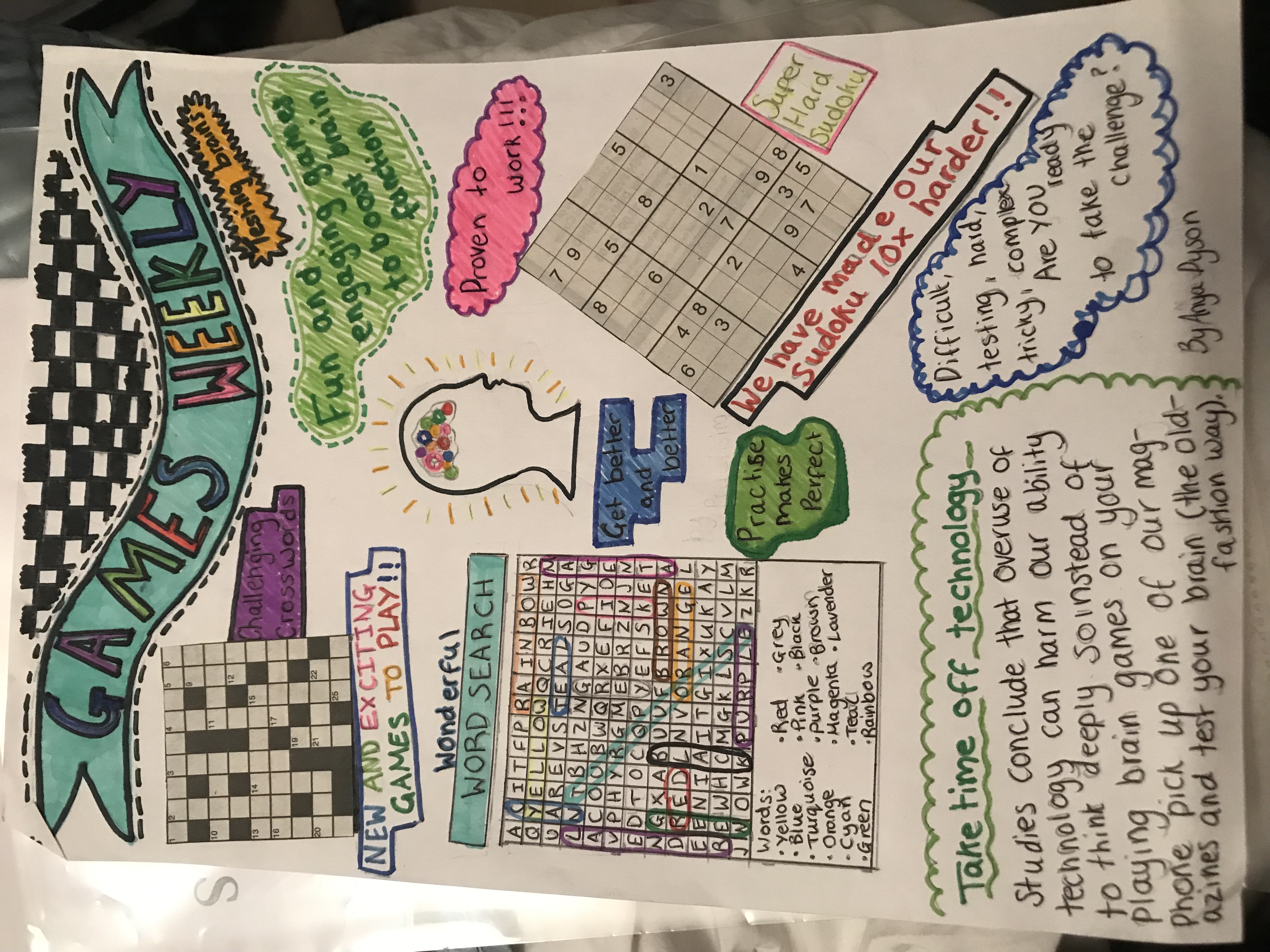
Iconic signs – The head/brain – The check board at the top – Word search
Indexical signs – Sudoku is indexical to fun – Colours
Symbolic sign – Text – Colours
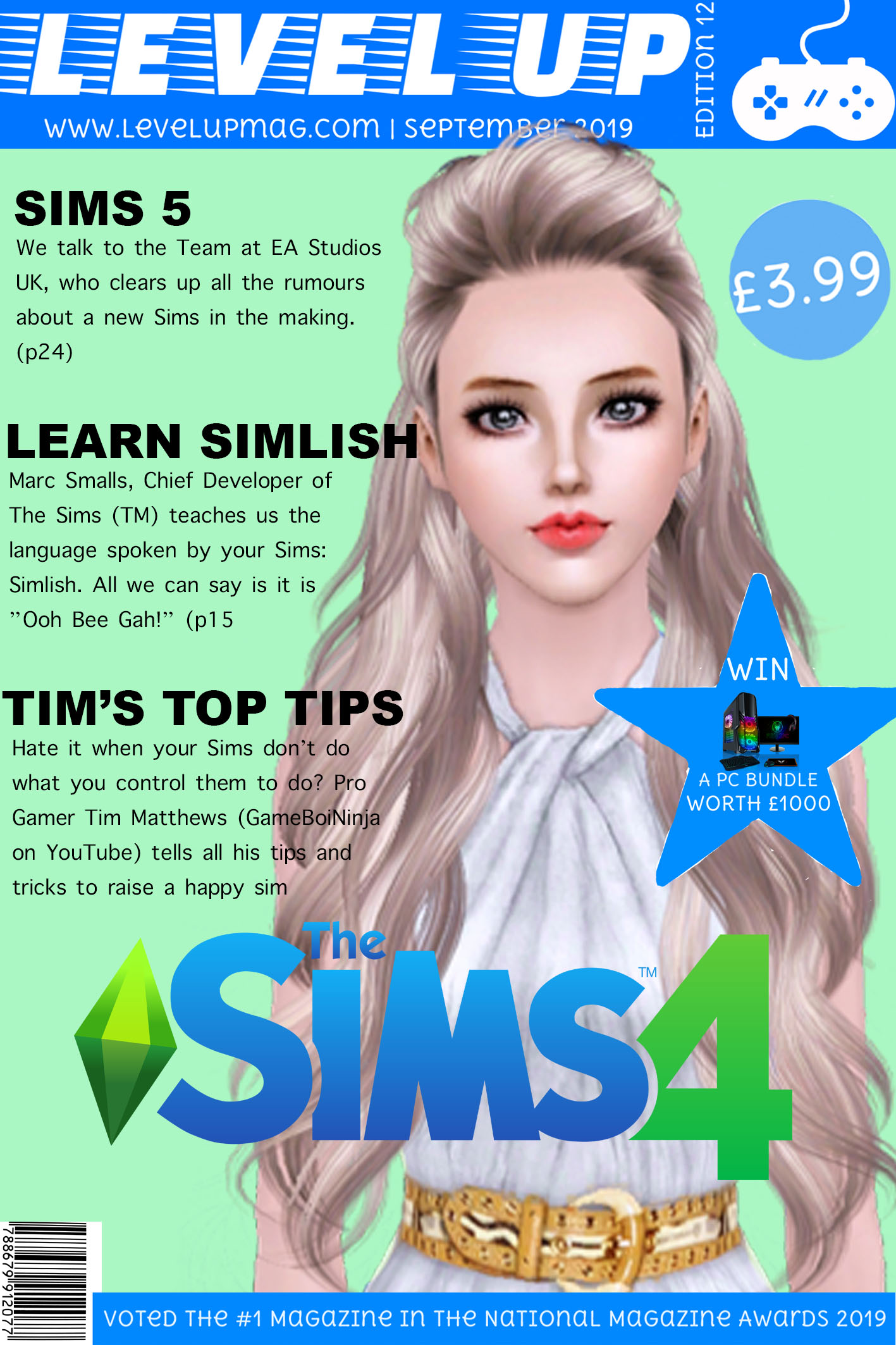
Sims Magazine Cover
This is my second attempt at creating a magazine cover for a gaming magazine. Before I started, I had a look at what I included in my previous magazine cover attempt and identified what I was missing and how I can improve. This magazine cover is based around “The Sims”. I have chosen to base mine on “The Sims” because it is one of the most popular games and it is also very famous, meaning people with instantly recognise the logo, hence why I have added it onto my magazine. I created my magazine cover in Photoshop and cut out bits of other magazines to use in my magazine. My magazine is based for Older Children and Teenagers (10-18years).
At the top is my Masthead, I have used the colours of the Sims branding (Blue and Green) as these colours look quite nice together and the bright blue stands out against my pale green background. On my masthead, I have also included the edition number and the date so people know when my magazine issue hits the shelves. I have also included the price, at (£3.99), which I think is quite reasonable as it entices children to buy it with what could be their own pocket money. I have decided to include a close up of a Sim as my main image, so from a distance people automatically realise this edition is based on “The Sims”. The Sim used as the central image is looking directly at the consumer as if they are trying to communicate with the customer. I feel the direct address makes the consumer feel included and more likely to buy the magazine as its as if they and the Sim are establishing a relationship.
I have chosen my cover articles carefully. I have chosen “Learn Simlish” (the language the Sims speak) as a bit of humour and to entice the reader to read on as I included a phrase of “Simlish” so they would want to find out the meaning. I also used alliteration with “Tim’s Top Tips” because at the age bracket my magazine is aimed at, kids want to succeed at a game, so I feel this article is suitable to out on my magazine cover. Lastly, I think the article about the Sims 5 is appropriate for the cover as it is an exclusive article. I also feel by mentioning the possibility of a new game, consumers are enticed to buy my magazine and to discover whether it is true or not. The “Sims 5” is a selling line of my magazine because if a new game is talked about, people are bound to buy the magazine to learn more about it. I have kept my cover lines quite vague to entice readers to buy the magazine and read on. Finally, I have a huge star shape with the word “Win”. I have made this quite large because I feel that promoting competitions with a prize worth loads of money will also entice consumers to buy the magazine.

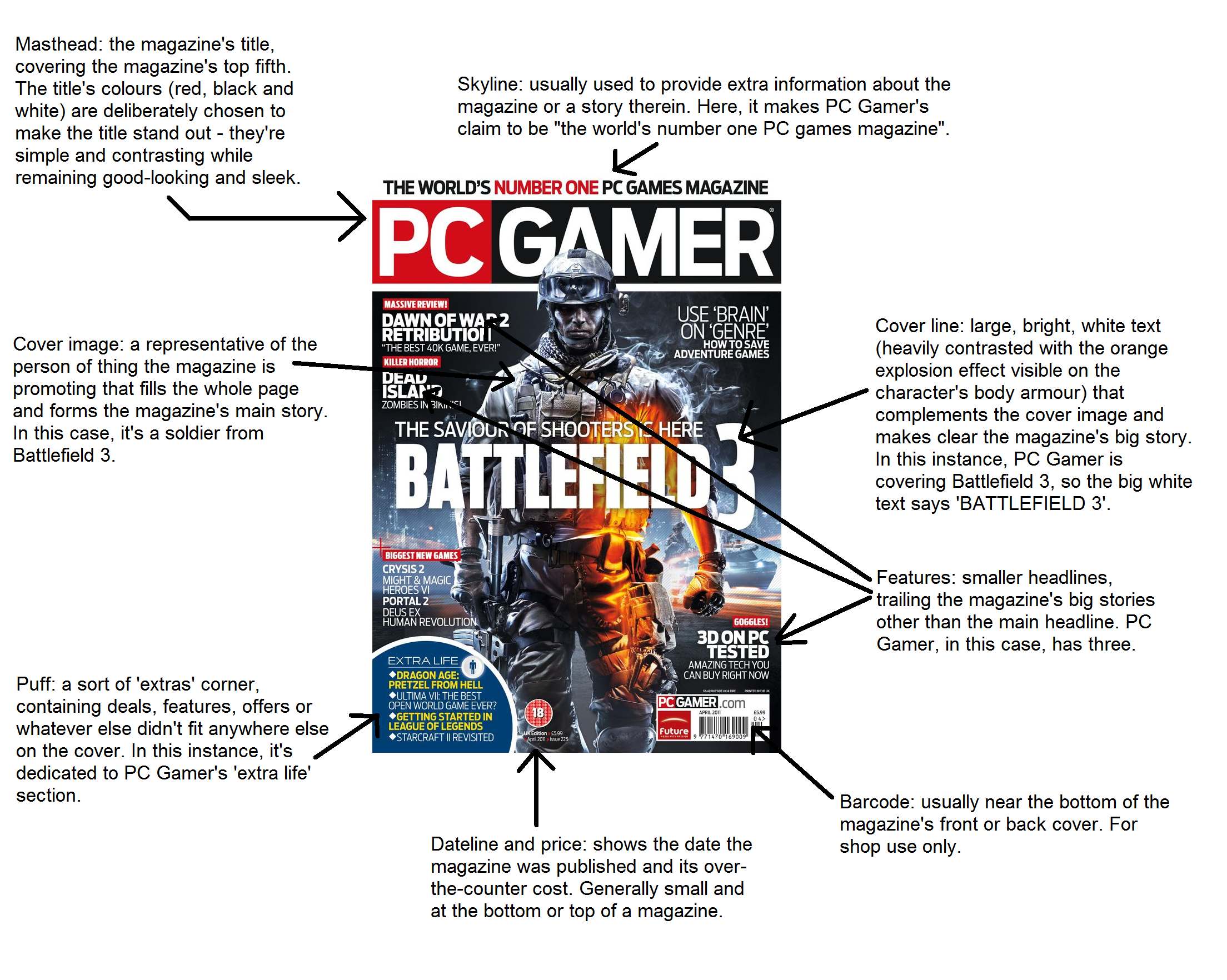
To help you look at this post from my blog:
http://mymediacreative.com/blog/2019/04/18/semiotics/
When you study any form of communication (Art, Music, English, Maths, French etc) you need to recognise that there is a LANGUAGE that is full of signs, codes and conventions, organised around a grammar (a set of organising principles).
TASK 1: To investigate Language, let’s try to create one of our own! In one big group create a new sign that represents a new meaning – in other words, a single element of a possibly new complex language. Then in small groups develop 3 more signs (EACH PERSON IN THE GROUP) so that you then have about 15 new signs that form the basis of your new language. Make sure some of your signs are command signs (signs that get people to do things – sit, stand, greet, wave, nod etc)
TASK 2: Once you have developed some basic units of your new language, you will need to teach this new language to another group. Then let’s test the acquisition of this new language as a demonstration – ie communicating to each other in this new language (that is way command signs may be a good basis as we can see students responding based on the use of this new Language).
When we have created a new language through these practical activities we can then start to think about some of the theoretical ideas that underpin our knowledge of LANGUAGE.